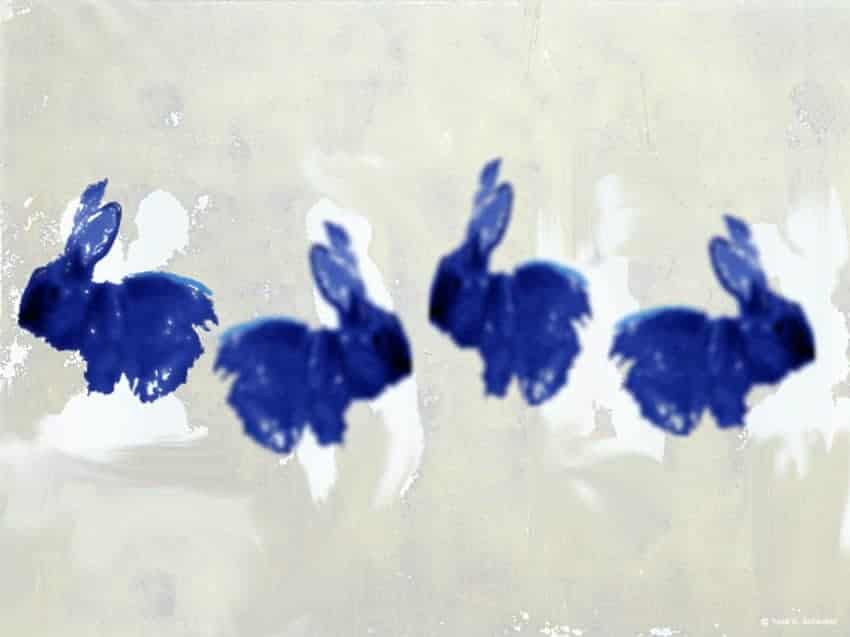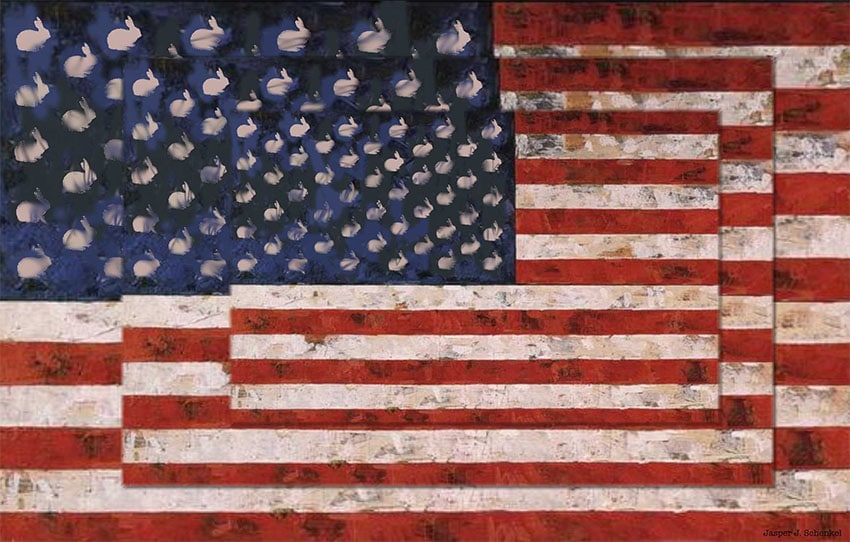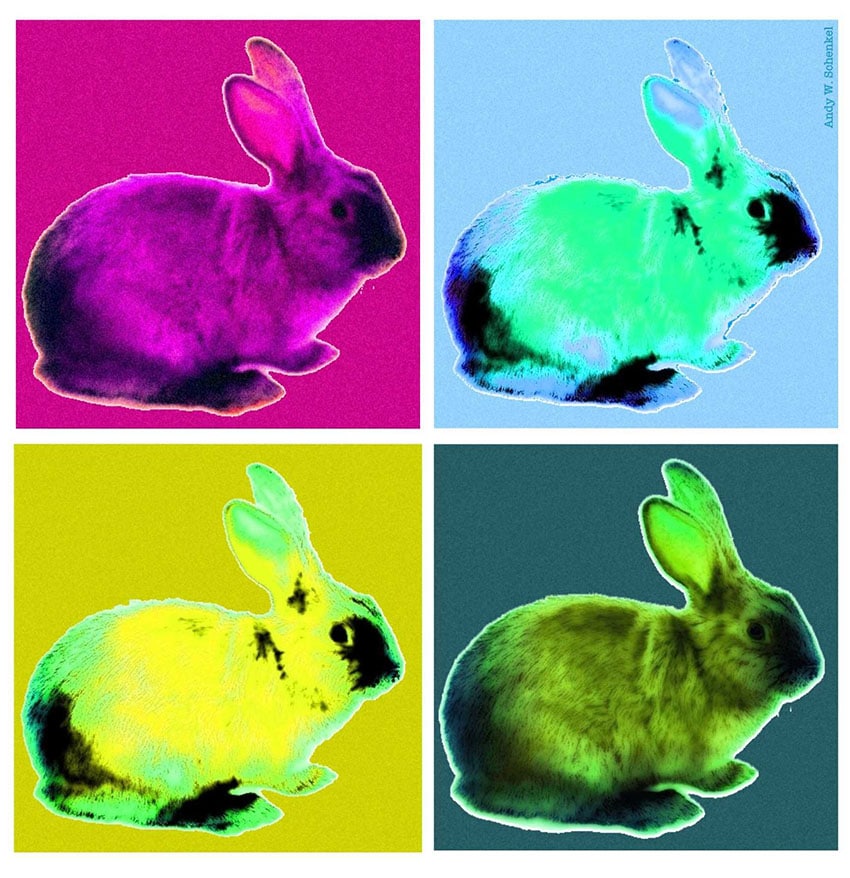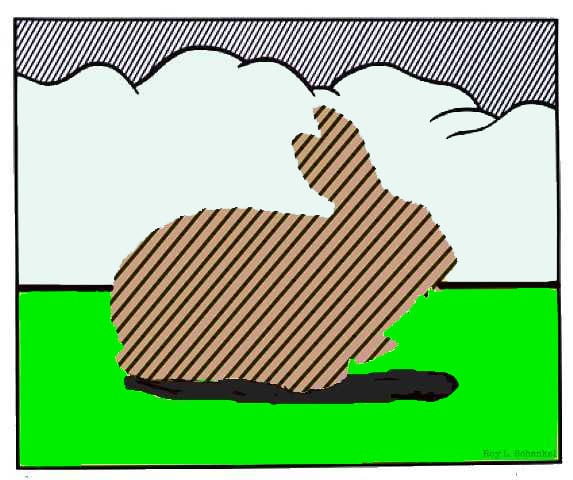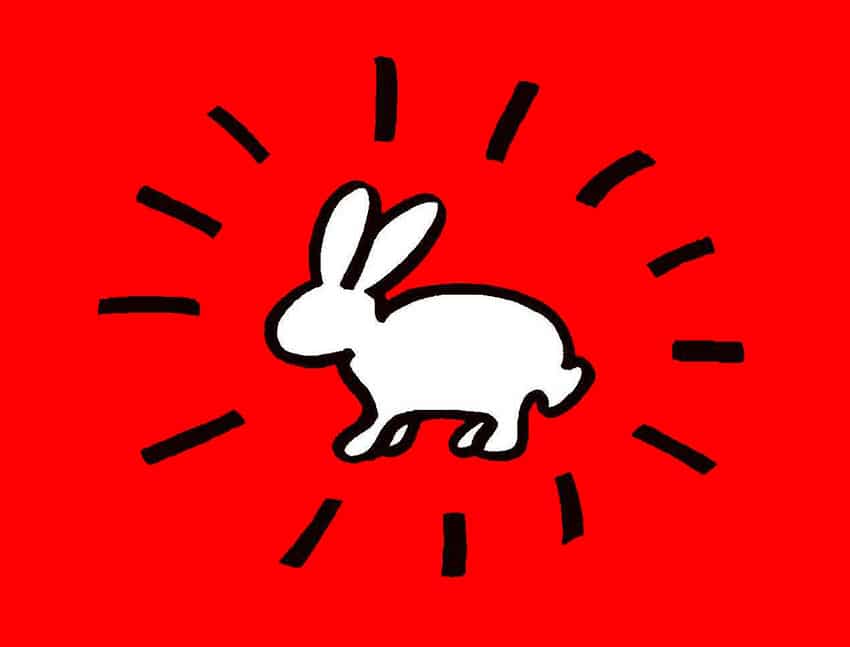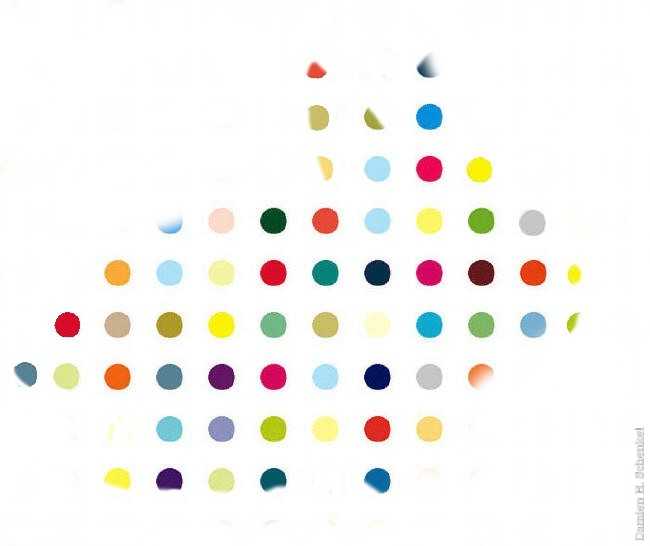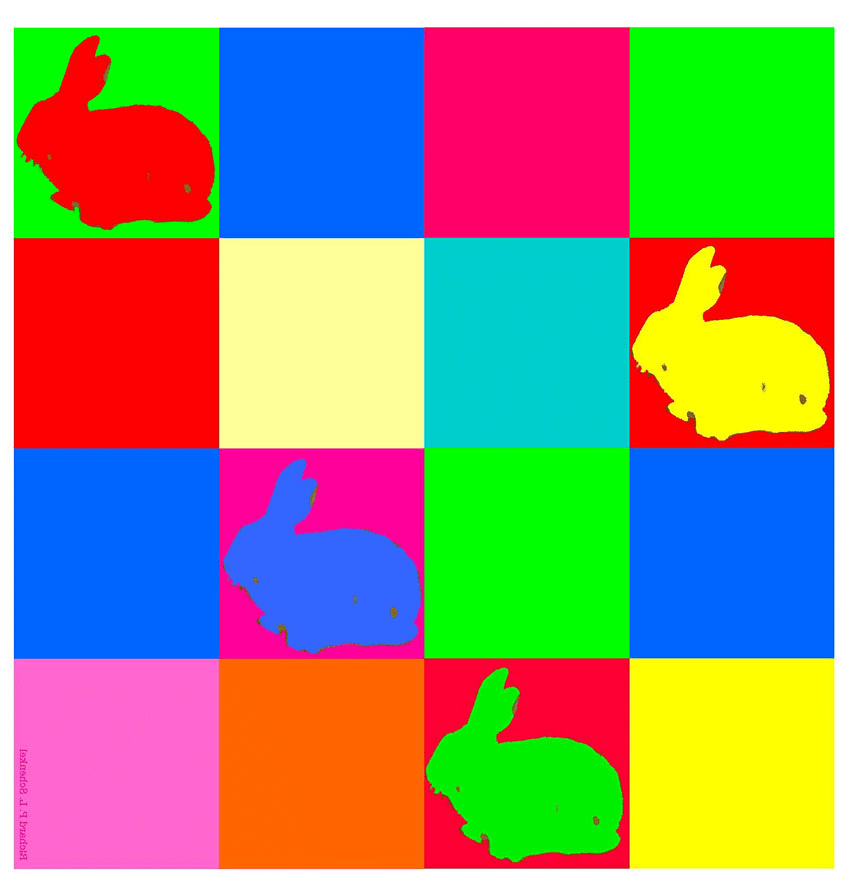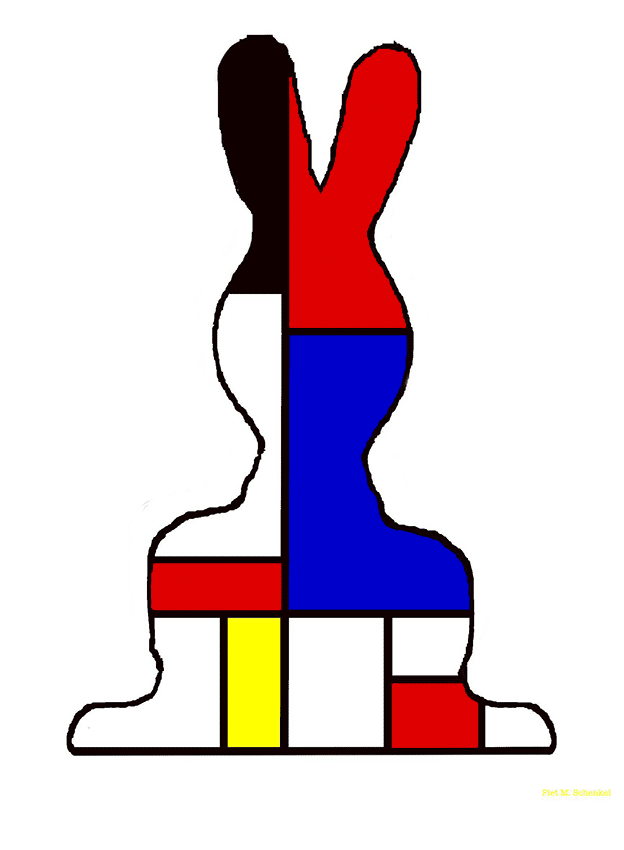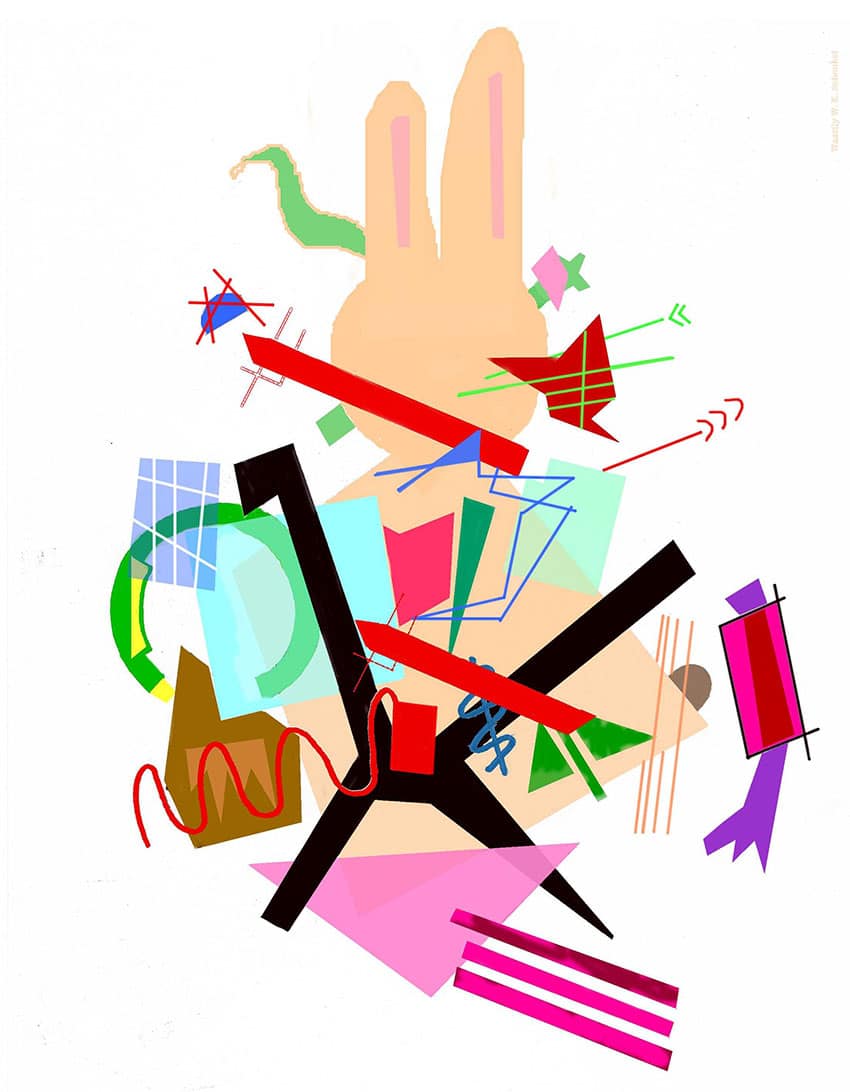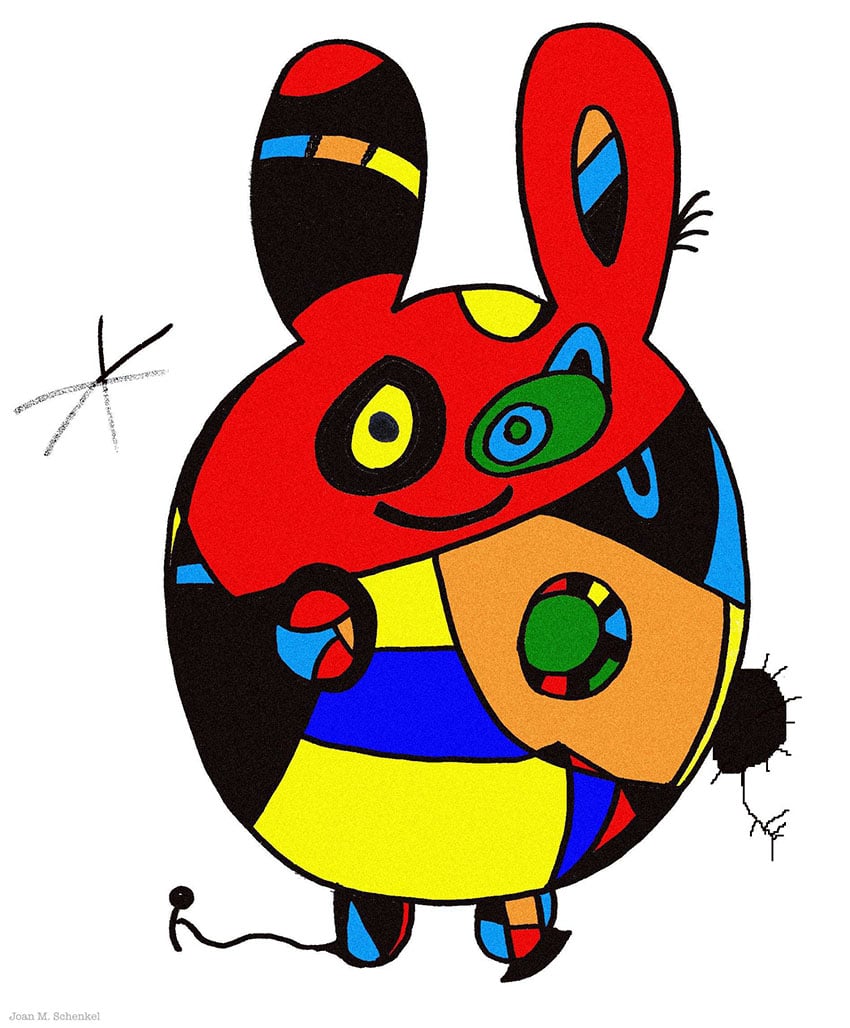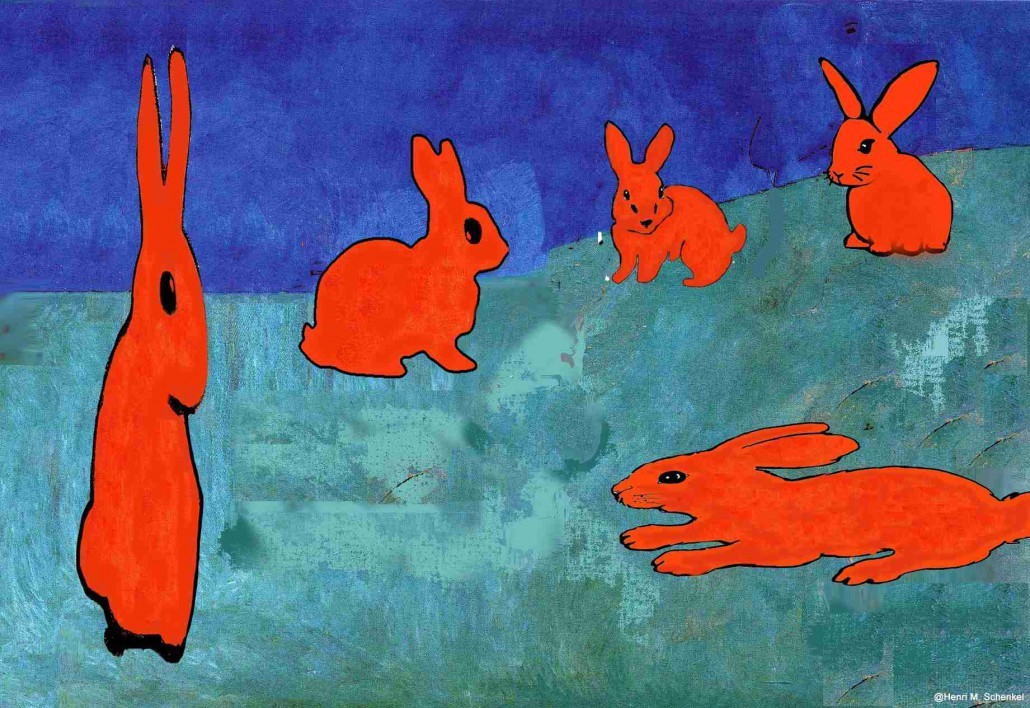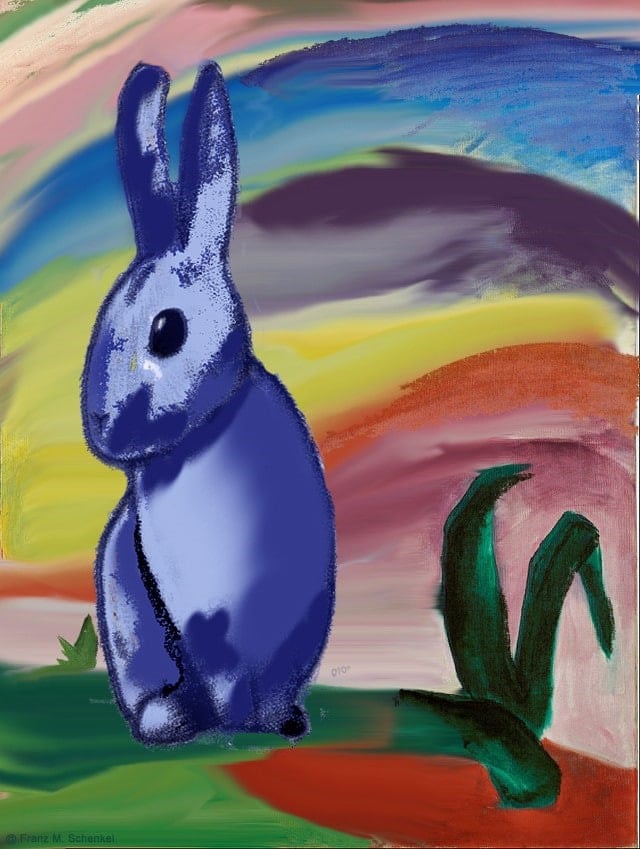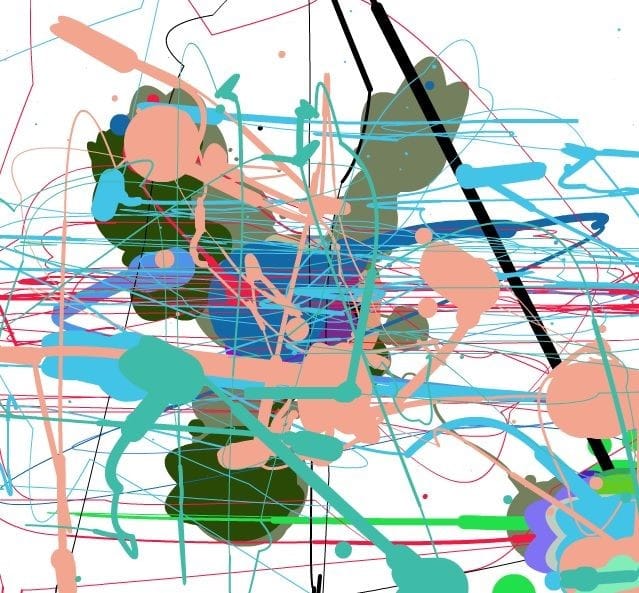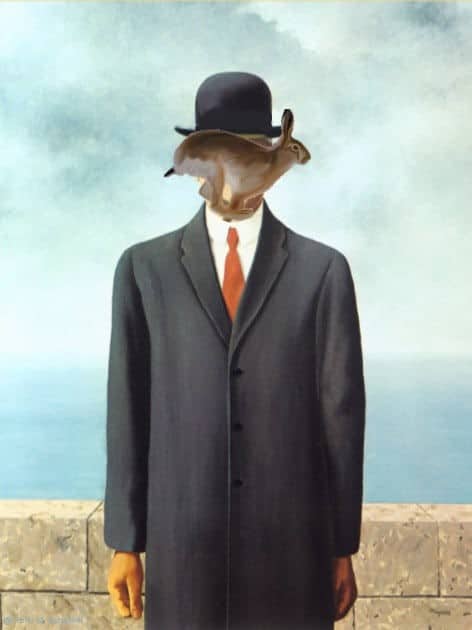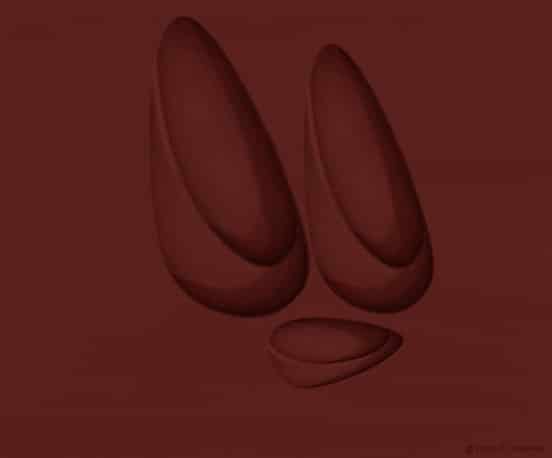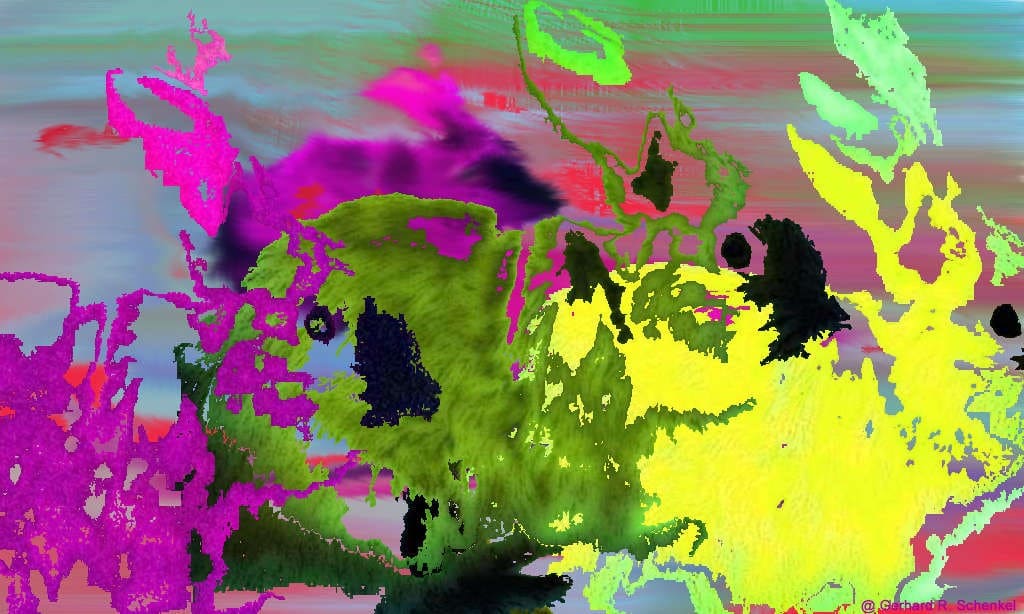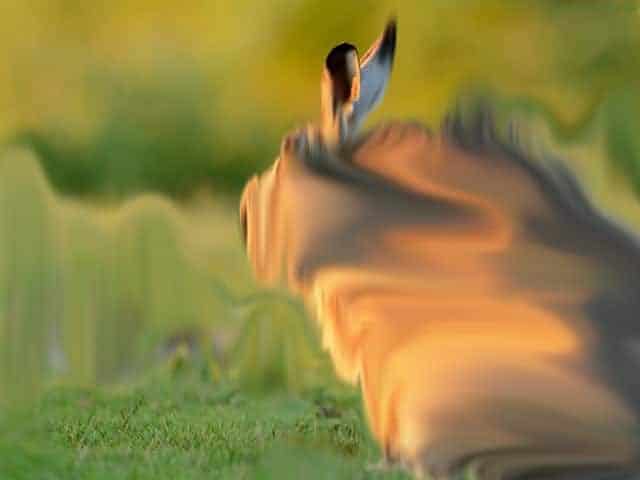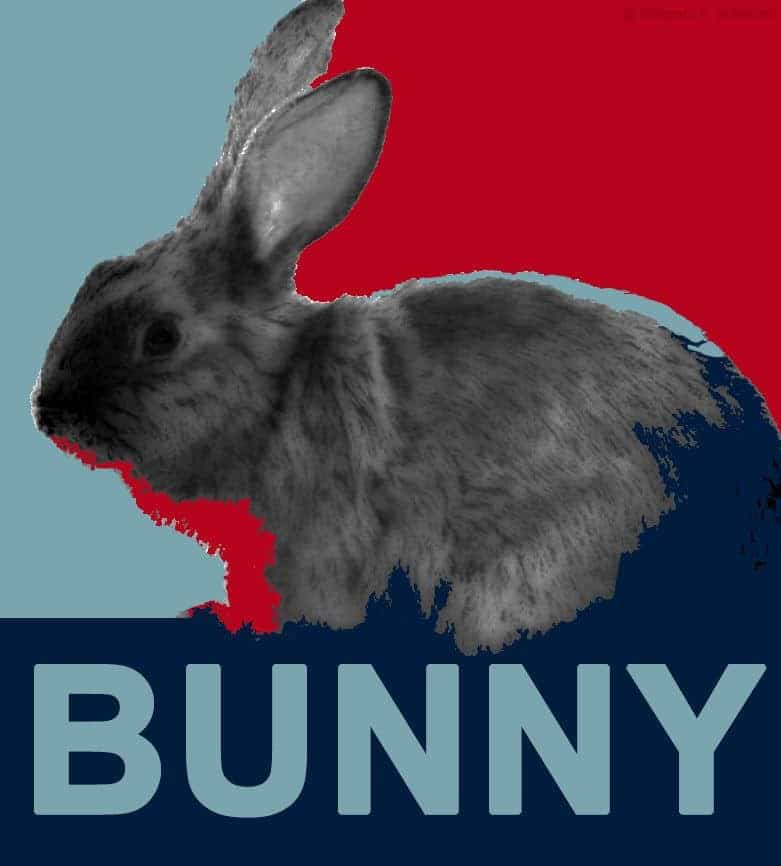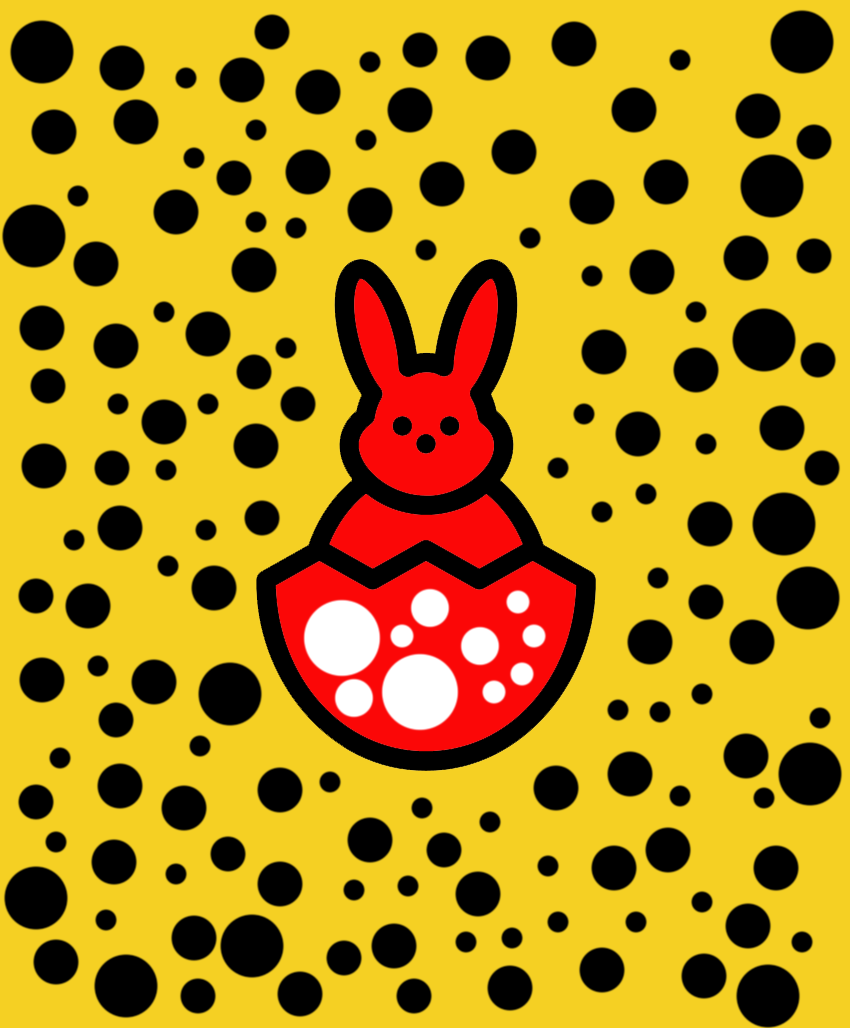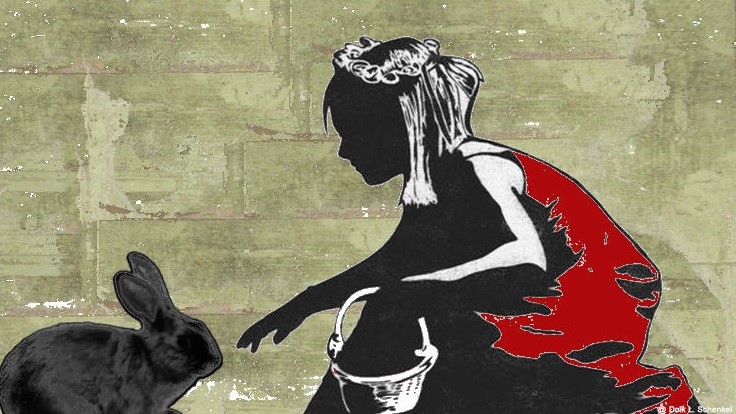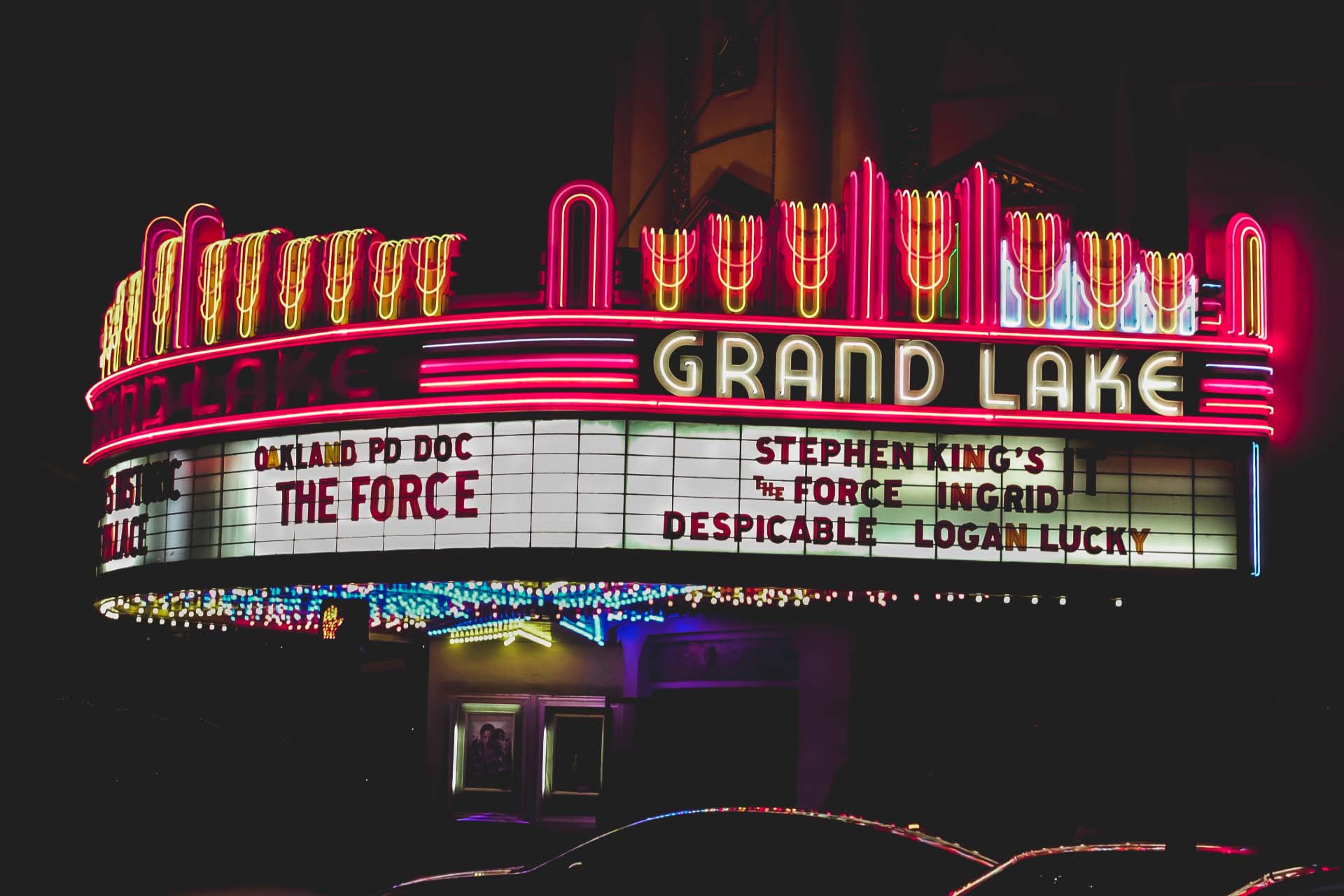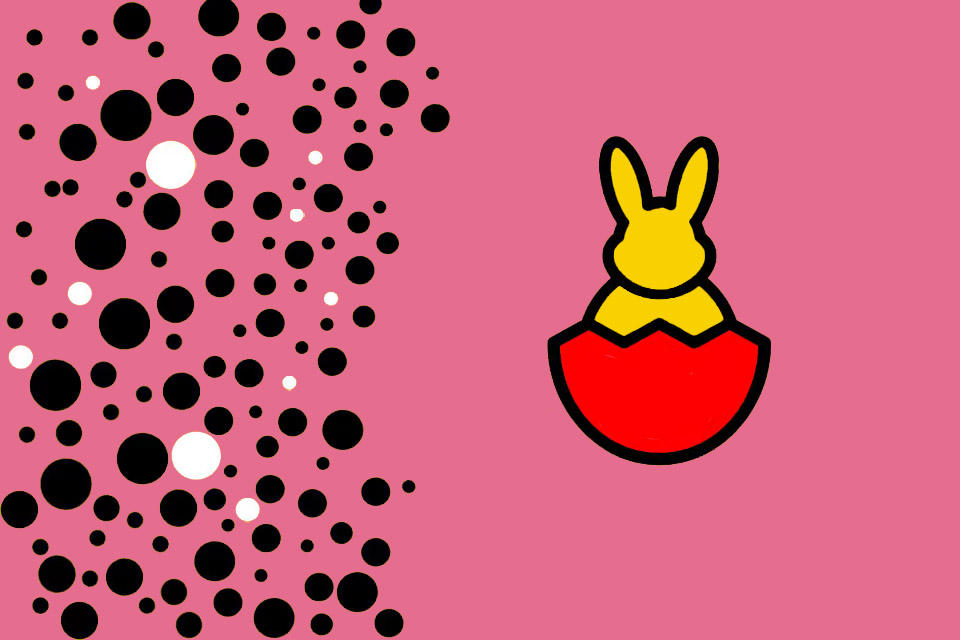Art meets Easter Bunny
Klein, Johns, Warhol, Lichtenstein, Haring and the Easter Bunny
Hirst, Lohse, Mondrian, Kandinsky, Miró and their depictions of the Easter Bunny
Matisse, Marc, Pollock, Magritte, Scheggi and their art with Easter Bunnies
Richter, Wild, Fairey, Kusama, Dolk and their Easter Bunny art
A surreal excursion into art history and a tribute to the Easter Bunny
Many artists have approached the motif of the Easter Bunny in their paintings. Some in an individual way, others inspired by influential painters of their time. Some works have never been published, other pictures are known to every child and some treasures are even known to only a few art connoisseurs.
Among art experts, the quote by the French painter Henri Matisse “There are Easter Bunnies everywhere for those who want to see them” is a clear indication of the importance of Easter in art history. As a motif, the Easter Bunny has an integrative character for the most diverse art movements, from Fauvism, Expressionism and Surrealism, Constructivism and New Realism, to Pop Art and Street Art. Works by Yves Klein, Jasper Johns, Andy Warhol, Roy Lichtenstein and Keith Haring, Damian Hirst, Richard Paul Lohse, Piet Mondrian, Wassily Kandinsky and Jean Miro speak a clear language. And Henri Matisse, Franz Marc, Jackson Pollock, René Magritte or Paolo Scheggi, Gerhard Richter, Sabine Wild, Shepard Fairey, Yayoi Kusama or Dolk Lundgren also put the Easter Bunny in the focus of their art.
Klein, Johns, Warhol, Lichtenstein, Haring and the Easter Bunny
Yves Klein is considered an important representative of New Realism and a precursor of Pop Art. He is best known for his monochrome paintings, especially those he produced in an ultramarine blue he developed and patented under the name International Klein Blue. The luminosity of his colour is based on a polyvinyl acetate, which Klein also used in his highly regarded work “collection de lièvre sans titre”. It is considered the starting point for his anthropometries developed from 1957 with nude models who painted the canvas with their bodies naked and soaked in blue paint.
Although his pictures cannot be classified as Pop Art, Jasper Johns is considered a pioneer of this art movement. By transferring everyday motifs into art, Johns anticipated the later concepts of Lichtenstein or Warhol. It is therefore hardly surprising that Jasper Johns also integrated other elements, such as Easter bunnies, into various variations of “Flag” or “Three Flags” at an early stage.
In the early 1950s, Andrej Warhola, alias Andy Warhol, developed a technique of drop and dripping, in which he copied motifs of angels, butterflies, cats or Easter Bunnies drawn with ink and ink with a sheet of blotting paper and transferred them to a new sheet. Together with friends, he coloured these works at colouring parties. He looked for new ideas and concentrated on trivial elements of pop culture such as Hollywood stars or cartoon and comic figures like Superman and Mickey Mouse. His “Coloured Bunnies” are the epitome of Pop Art.
Soon, however, Warhol had to realise that other artist colleagues such as Robert Rauschenberg or Roy Lichtenstein painted similar motifs. When Roy Lichtenstein turned to Pop Art after expressionist and surreal attempts, he achieved his breakthrough in 1961 with the painting “Look Mickey”. His style became the industrial style of the printed comic, easily recognisable today by the “even dots of colour”. But Lichtenstein was also a master of lines, impressively seen in his painting “Easter Bunny in the Meadow”
Andy Warhol met Keith Haring in 1983. Haring first attracted public attention with his chalk drawings in the New York Metro. The depiction of the “Radiant Baby” became his symbol. The image of the “Radiant Rabbit” was created around the same time and could easily have become his most famous representation.
Hirst, Lohse, Mondrian, Kandinsky, Miró and their depictions of the Easter Bunny
The painting technique denday dots (named after the American artist Benjamin Day), which was further developed by Roy Lichtenstein, is now also Damien Hirst’s terrain. Hirst was a founding member of the London-based artists’ movement Young British Artists in 1988 and became known above all for a tiger shark pickled in formaldehyde, a sheep pickled in the same way, a human skull set with diamonds and the work “Rabbit for the Love of Dots”.
The Swiss painter and graphic artist Richard Paul Lohse contrasts the colour dots of Hirst and the lines of Lichtenstein with his concrete surfaces. With his horizontal-vertical arrangement of colour fields, he creates a structural order that he deliberately suspends in his creation “Da lang Hase”, creating an almost revolutionary and enthusiastic burst of anticipation.
Another representative of colour fields and surfaces, the Dutch painter Piet Mondrian, goes an important step further with his famous “Hare=free”. It is not the rabbits that create a visual resistance to the surface, but the Easter Bunny itself that becomes the colour carrier. The silhouette of the hare thereby forms a deliberate contrast. It is unproven whether the painting of Easter eggs today has its origin in the work of Mondrian.
Wassily Kandinsky was also known for his distinct sense of colour and form. He assigned meanings to colours and even tried to prove that certain colours belonged to certain shapes such as circles, triangles and squares. As the degree of abstraction in his paintings increased, Kandinsky developed forms of improvisation, for example in his work “Colour Sounds with Rabbit”.
In contrast to the improvisations of Kandinsky, Joan Miró used symbols for the moon, stars, bird, eye, woman and rabbit. As a representative of Classical Modernism, Miró’s imaginative motifs make him one of the most popular artists of the 20th century. He created a large number of works with over 2,000 oil paintings and 3,500 prints. According to an entry in his notebook, “Conejito de Pascua” was created on Mallorca when he once again saw an apparition on the ceiling while falling asleep.
Matisse, Marc, Pollock, Magritte, Scheggi and their art with Easter Bunnies
Henri Matisse is regarded as the pioneer and main representative of Fauvism, which propagated the detachment from Impressionism and represented the first artistic movement of the 20th century. He worked on the large canvas for “Easter Bunny” without preparatory sketches and reconsidered his composition several times. The colouring no longer serves the illusionistic representation of an object, but the painterly statement emerges from the harmony of the colour surfaces. The bright orange of the rabbits is typical.
Franz Marc also used stylistic elements of Fauvism, but did not completely separate himself from the subject matter in his work. He was a co-founder of the artists’ association Der Blaue Reiter, which emerged from the Neue Künstlervereinigung Muenchen. His well-known paintings, which mainly focus on animal motifs such as “The Tiger”, “Blue Horse I”, “The Yellow Cow” and “The Blue Rabbit”, were created during this period.
Jackson Pollock, a master of Abstract Expressionism, created an extraordinarily innovative body of work with his drip-painting process. Influenced by European Modernism, Cubism as well as Surrealism, he used the unconscious as the source of his art. His paintings live from the contrast and opposition of structure and rhythm. This contradiction is also clearly evident in one of his most famous works, “Eyes on the Bunny”.
Unlike other surrealist artists who mix dreamlike images with abstract forms, René Magritte’s works contain normal elements that he places in surreal contexts. For some art critics, the apple motif he often used represents nothing other than a round egg. A hen’s-egg problem becomes an egg-apple solution, so that there is also a variente “Le fils de l’homme avec lièvre” of his “Le fils de l’homme” created in Belgium in 1964.
Paolo Scheggi was an Italian Constructivist painter. He cut round holes in the linen-covered walls in a geometric arrangement, which he finally mounted one behind the other. The depth of his motifs is created in harmony with the monochrome choice of colours, often executed in white, yellow, red and blue. In “Intersuperficie curva da coniglietto di Pasqua”, Scheggi highlights both the choice of geometric form (oval instead of circular) and the colour scheme (wine red and none of his usual colours). Art experts suspect an inner bond with the Easter Bunny that goes far back into his childhood.
Richter, Wild, Fairey, Kusama, Dolk and their Easter Bunny art
Gerhard Richter began his painterly journey in which he tried out practically all the forms of expression and styles of modern painting. Influences from Pop Art, Abstract Expressionism, but also Neo-Dada and Fluxus make him one of the greatest German artists. His diverse modes of expression also lead to a discontinuity in his work. Paintings, blurred paintings or cloud paintings appear completely detached from each other. His expressively coloured “Rabbits at Easter” consists of several applications of paint with, in part, intervening scrapings down to the painting ground, impulsive gestures as well as overpaintings. According to Richter, this painting also depends to a considerable extent on chance and its final version contradicts his initial intentions.
Sabine Wild creates special works of art from structures, lines, waves, light and blurs. Her typical longitudinal and horizontal shifts result in an exciting field of tension between representational painting and depictive photography. Thus, “Single Easter Bunny” is also a fascinating picture that suggests reality and at the same time makes it seem fleeting.
Shepard Fairey is a contemporary graphic artist, illustrator and Street Artist. Fairey achieved great fame with his iconic “HOPE” poster for Barack Obama’s 2008 presidential campaign. The poster, in the national colours of red, blue and white and stylistically reminiscent of Pop Art, develops its own note, which is evident in many of Fairey’s other works. Bunny” also shows the expressive power of his stylistic idiom.
Japanese artist Yayoi Kusama has taken the art world by storm with her colourful creations, earning her the title “Queen of Pop Art” and “Princess of Polka Dots”. But Kusama is not only a painter and sculptor, she is also a fashion designer, writer and friend of the Easter Bunny. A true jack-of-all-trades! She even has her own museum in Tokyo, which is basically a temple for everything to do with polka dots. Her latest work can also be found there: “Easter Bunny. Dot. Dot. Dot.”!
Dolk (Norwegian for dagger) is the pseudonym for Norway’s best-known graffiti artist Dolk Lundgren. His motifs are often pop cultural references, packaged in a humorous or critical context. Inspired by the British street artist Banksy, he has long since produced his stencil art not only on house walls, but also for various museums. It is only a matter of time before “Easter Bunny Girl” is also exhibited in Bergen, Stavanger or New York.
Notes:
If you like the post or want to discuss it, feel free to share it with your network.
Perhaps you know the motifs from microTOOL’s blog or the publication in the Tagesspiegel, Berlin’s largest daily newspaper. Since the pictures can no longer be found there, I am publishing them again here.
All the information in this article scrapes along a surreal art history at best. Anyone who wants to learn about art and the history of its representatives should urgently seek other sources. In reality and in the present, I wish you, your families and friends a happy Easter.
This post has been revised. The “original” was published here on the blog on April 14, 2022. Thanks to Yayoi Kusama and her new work!
Michael Schenkel has published further articles in t2informatik, including

Michael Schenkel
Head of Marketing, t2informatik GmbH
Michael Schenkel has a heart for marketing - so it is fitting that he is responsible for marketing at t2informatik. He likes to blog, likes a change of perspective and tries to offer useful information - e.g. here in the blog - at a time when there is a lot of talk about people's decreasing attention span. If you feel like it, arrange to meet him for a coffee and a piece of cake; he will certainly look forward to it!
